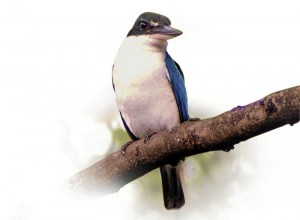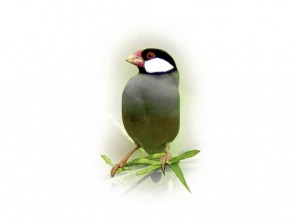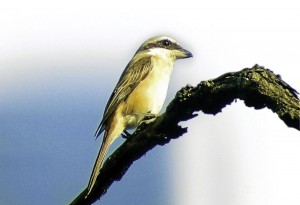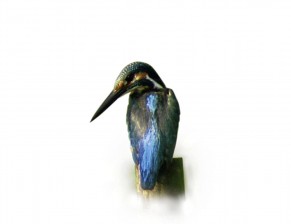UP campus a busy bird haven
Philosophy professor Jerry de Villa cherishes a photo of an injured bird that landed near his car then parked on the University of the Philippines campus in Diliman, Quezon City.
The poor feathered fellow— an ashy ground thrush—was knocked down after flying straight into a glass window of one of the buildings. The reflection tricked it into thinking that it was heading for a clump of trees.
De Villa, a bird enthusiast and nature lover, picked up the bird and brought it home. “I later set it free after its injuries healed, though it left behind bird poop in my car,” he said with a smile.
“Many birds have died here when they slam into windows, thinking that the trees (mirrored on the glass) are real,” he said in a forum in UP last week, giving an update on the various species that had found either a home or a way station in the 493-hectare state university.
That birds on the campus fall for optical illusions, like pilots facing air traffic hazards, may be a telling indication of how UP Diliman has become a vast—and busy—avian sanctuary.
The Inquirer in 2006 reported that up to 82 bird species, endemic and migratory, had been spotted in UP (and also in nearby Ateneo de Manila University). Writer Amadis Ma. Guerrero based the figure on sightings made by the Wild Bird Club of the Philippines (WBCP).
De Villa, a WBCP member, said he had photographed the species recorded at that time. His shots can be viewed on the Philippine Bird Photography Forum website.
“This year, around 115 species have been seen on campus,” he told the Inquirer in an interview. Of this number, 19 are endemic or can be found only in the Philippines, he added.
“They can be found everywhere where there are trees,” he said. The ashy ground thrush that De Villa rescued, for example, was found near the Vargas Museum.
On a good day at the tree-lined compound of the high school department of UP Integrated School (UPIS), anyone with the patience and eye for winged delights can spot the colasisi, the Philippine pygmy woodpecker and flowerpecker, or the red-keeled flowerpecker. They usually hang around the parking lot, he said.
Other species like the Philippine serpent eagle and water birds like the yellow bittern and cinnamon bittern have also been sighted around the Hardin ng Rosas residential complex on the south side of the campus.
“Falcons are sometimes spotted there from October to April,” De Villa said.
The UP Lagoon also hosted the colasisi, the pygmy woodpecker, the lowland white eye, the spotted wood kingfisher and the serpent eagle, he recalled.
Owls were then heard hooting at the Physics building. The Philippine eagle owl in particular, was sometimes seen along the Beta Way, a path cutting across the Academic Oval, he added.
According to De Villa, the UPIS compound on Katipunan Avenue is UP’s last remaining “tree corridor” that connects the campus to a strip of green terrain that goes all the way to the Sierra Madre mountain range. The corridor stretches across Balara, La Mesa dam and Ipo watershed, before reaching the Sierra Madres.
Birds feel at home in areas of thick foliage where they find food and nesting grounds, he said.
Sadly, bird sightings— a rarity amid Metro Manila’s expanding urban sprawl—are often wasted on UP students, De Villa noted.
They seem to be more absorbed tinkering with their high-tech gadgets (their “avian” encounters perhaps limited to the popular Angry Birds computer game or the social networking site Twitter) than looking up once in a while to enjoy Nature’s spectacles, he said in jest.
“This is why we should walk the ground and see our land’s wealth up close. If we see these treasures, we become bound to the land. We learn to value it and fight for it,” he said.
De Villa recalled once spotting a small black-chinned fruit dove in the trees dotting the walkway between Palma Hall and a canteen. The students, he said, just passed him by, not even bothering to stop and ask what had caught his attention even as he started taking photos of the bird.
“It was only when I saw another bird later that some students finally got curious and asked me what it was,” he said.
De Villa used the forum to air an appeal for the preservation of the tree corridor on the UPIS grounds lest it disappears and gives way to construction projects in the future.
“We have to take care of the connections that are left. We should cultivate the treasures that we still have,” he said.



